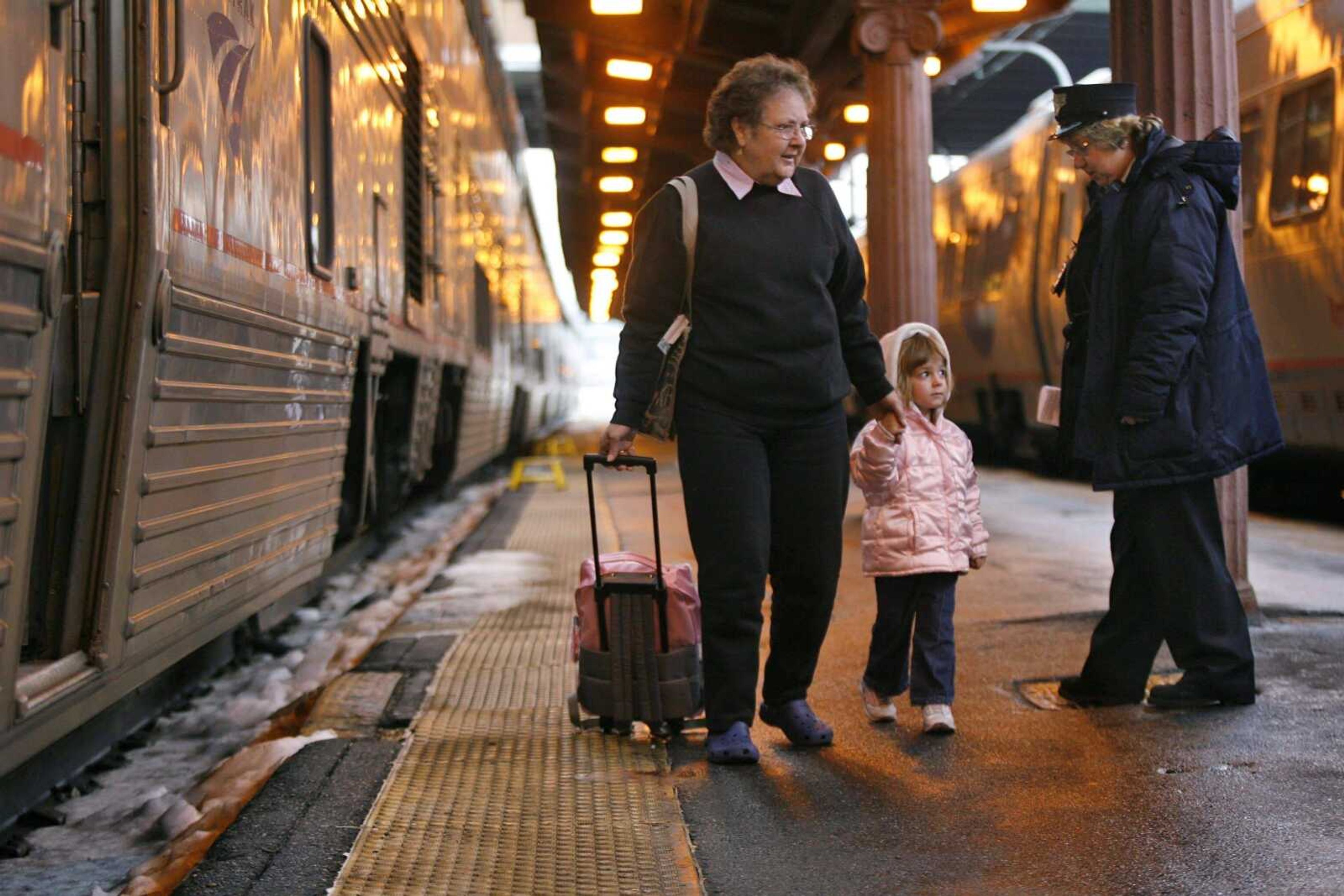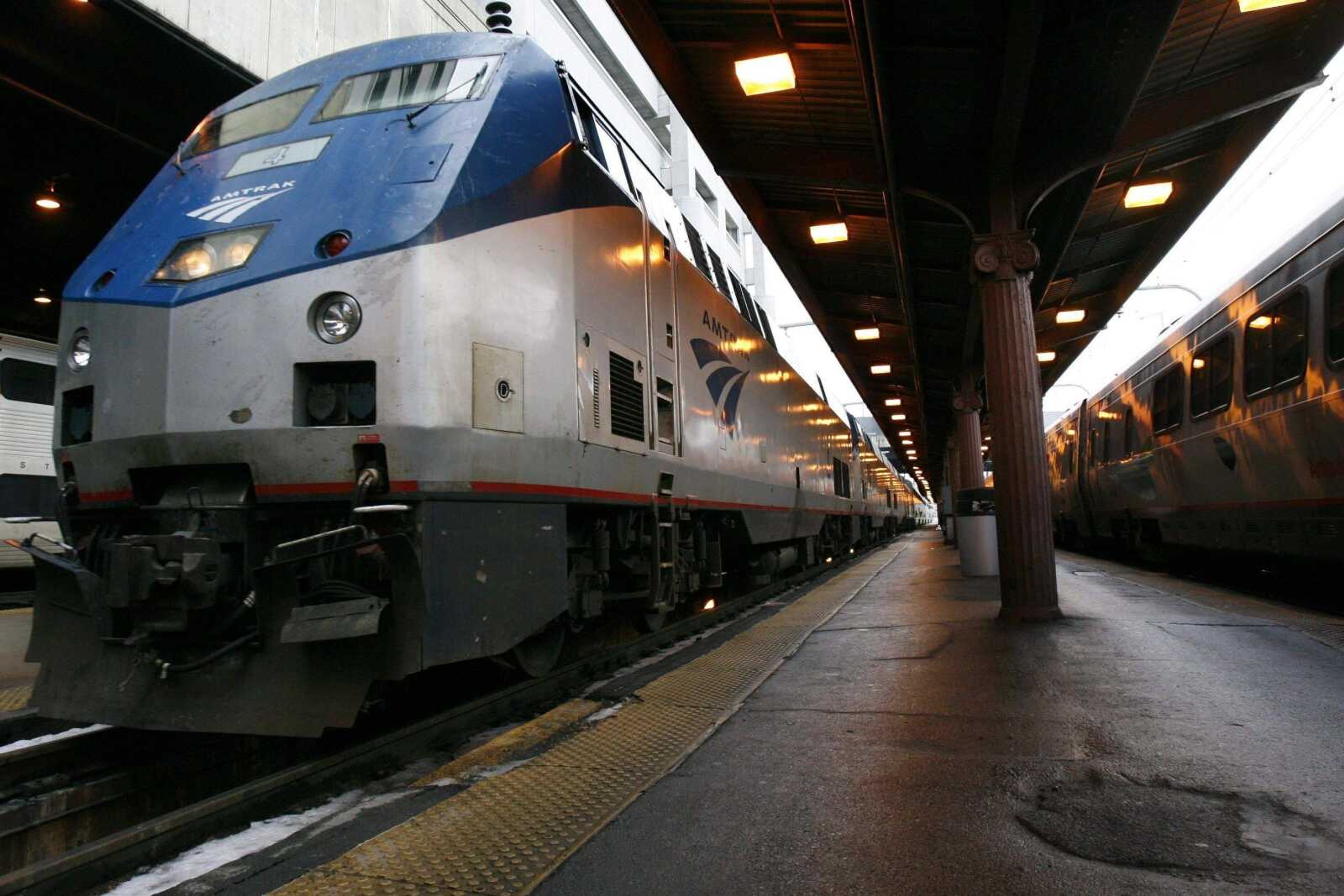Passenger trains gain favor with public, Congress
WASHINGTON After half a century as more of a curiosity than a convenience, passenger trains are getting back on track in some parts of the country. The high cost of energy, coupled with congestion on highways and at airports, is drawing travelers back to trains not only for commuting but also for travel between cities as much as 500 miles apart...
WASHINGTON
After half a century as more of a curiosity than a convenience, passenger trains are getting back on track in some parts of the country.
The high cost of energy, coupled with congestion on highways and at airports, is drawing travelers back to trains not only for commuting but also for travel between cities as much as 500 miles apart.
Californians are considering selling billions of dollars worth of bonds to get going on an 800-mile system of bullet trains that could zip along at 200 mph, linking San Francisco and San Diego and cities in between.
In the Midwest, transportation officials are pushing a plan to connect cities in nine states with a hub-and-spoke system centered in Chicago. The nine states included in the Midwest Regional Rail Initiative are Ohio, Indiana, Michigan, Illinois, Wisconsin, Minnesota, Iowa, Missouri and Nebraska.

The public is way ahead of policymakers in recognizing trains as an attractive alternative to cars and planes, said Rep. James Oberstar, chairman of the House Transportation and Infrastructure Committee.
"I think we're at a transformational point in intercity passenger rail service," said Oberstar, D-Minn.
Amtrak, the passenger rail service that struggled for years to attract riders, drew a record 28.7 million in the year ending Sept. 30. That is 11 percent more than the year before and the sixth straight year ridership has increased. Ticket revenue hit a record $1.7 billion, a $200 million increase from a year earlier.
Rail travel is gaining greater favor in Congress, which provides the subsidies needed to keep Amtrak rolling. Lawmakers are trying to find ways to deal with high energy prices, congested and aging roads and bridges, and an air traffic control system that relies largely on World War II-era technology.
Congress passed legislation this month that sets a goal of providing $13 billion over five years to Amtrak; it's a major vote of confidence for the railroad. The measure also encourages development of high-speed rail corridors and contains $2 billion in grants to states to enhance or introduce new service between cities. The money still must be appropriated.
President Bush, an Amtrak critic who has opposed anything more than minimal money for the rail service over the past eight years, signed the bill Oct. 16.
With the economy in crisis and credit tightening, rail supporters acknowledge there is uncertainty in securing all the money, especially when competing with highway and aviation lobbies for any additional transportation dollars.
Congress has "a lot of mouths to feed on the transportation side," said Joe McHugh, Amtrak's vice president for government affairs.
Unlike Europeans, whose cities are connected by passenger rail networks, relatively few Americans travel by rail except in the popular corridor from Washington to Boston, in parts of California, and routes extending from Chicago. Outside the Northeast, ticket fares usually do not cover direct operating costs.
Critics say it is unfair to require people in areas where there is no Amtrak service or infrequent service to subsidize the train travel of people in the few corridors where there is frequent, fast service.
"I do not think you can justify many, perhaps most, of the routes Amtrak is running," Sen. Jeff Sessions, R-Ala., said during Senate debate last month. "Fundamentally, the romantic view that we are going to have some sort of major international rail system does not seem to be realistic."
Still, some states are pushing for more and better passenger train service. In California, voters will decide Tuesday whether to launch the most ambitious rail project undertaken by any state. The ballot measure would authorize nearly $10 billion in bonds to pay for planning and construction.
Proponents say a high-speed rail system could help reduce congestion at California airports, lessen dependence on foreign oil and decrease greenhouse gases. Critics say the state could be forced to raise taxes to pay off the bonds, and the money would be better invested in urban transit systems and highway construction.
In the Midwest, expansion of the passenger rail network is supported by Democratic presidential nominee Barack Obama.
Some cities that would be in the network have passenger train service to Chicago -- Obama's hometown -- but it is often slow and infrequent. The regional plan calls for using 3,000 miles of existing rail rights of way and introducing modern train cars and engines operating at speeds up to 110 mph.
Obama's transportation plan pledges support for Amtrak and calls for development of high-speed rail networks across the country as a means to conserve energy and boost the economy.
His Republican opponent, John McCain, has been a persistent critic of Amtrak's reliance on subsidies. Obama co-sponsored the recent Amtrak bill; McCain voted against it.
Gov. Ed Rendell, D-Pa., said higher gas prices and concern about dependence on foreign oil have made people more willing to invest in passenger rail.
"There is an appetite for city-to-city rail," Rendell told reporters recently. "Why should we be different than any other country in the world? You go to Europe and you can't get an airplane to a city less than 200 miles away."
On the Net
- Amtrak: www.amtrak.com
- California ballot initiative: tinyurl.com/5q7d2x
- Map of states included in the Midwest Regional Rail Initiative: www.dot.state.mn.us/passengerrail/onepagers/midwest.html mwmap
Connect with the Southeast Missourian Newsroom:
For corrections to this story or other insights for the editor, click here. To submit a letter to the editor, click here. To learn about the Southeast Missourian’s AI Policy, click here.






